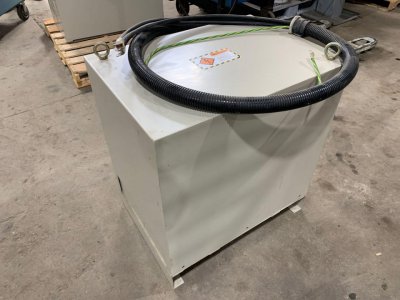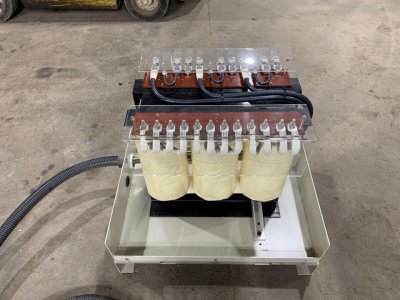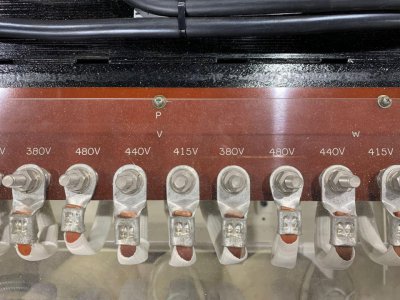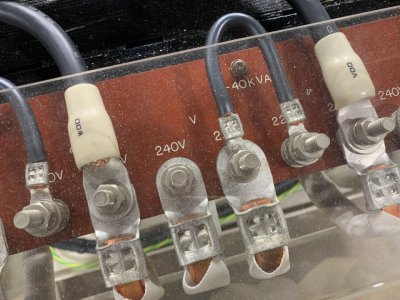- Joined
- Oct 14, 2014
- Messages
- 1,973
My son just bought a waterjet that only runs on 440. BTW He STOLE IT. This one with low hours https://www.omax.com/omax-waterjet/55100
There was an auction last night with three different transformers. The one he wanted went $1200. With premiums it waas too close to the scatch'n'dent one he can get from an electric supply place with warranty.
I said this one is mis-lableled, it will work to step 220 3 phase up to 440 three phase. He bought it and said i owe him $100 if wrong.
Look at the pics. I see one set of lugs on top for lo volts and another on the bottom for hi volts.




There was an auction last night with three different transformers. The one he wanted went $1200. With premiums it waas too close to the scatch'n'dent one he can get from an electric supply place with warranty.
I said this one is mis-lableled, it will work to step 220 3 phase up to 440 three phase. He bought it and said i owe him $100 if wrong.
Look at the pics. I see one set of lugs on top for lo volts and another on the bottom for hi volts.





